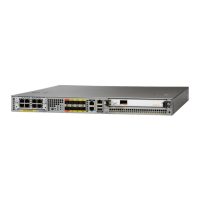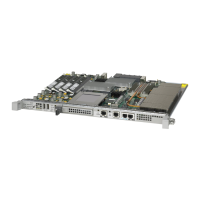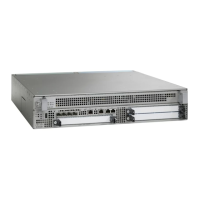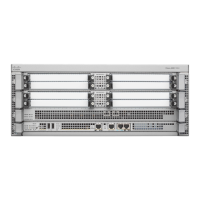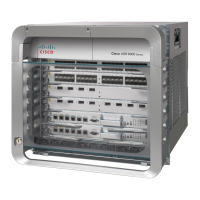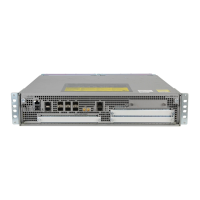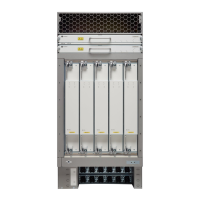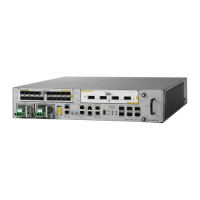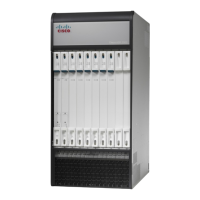10-16
Cisco ASR 1000 Series Aggregation Services Routers Software Configuration Guide
OL-16506-10
Chapter 10 Synchronous Ethernet Support
Configuring Synchronous Ethernet
ESMC EVENT pkts in: 0
ESMC EVENT pkts out: 0
Troubleshooting the SyncE Configuration
Table 10-2 list the debug commands that are available for troubleshooting the SyncE configuration on
the Cisco ASR 1000 Series Router:
Note Before you troubleshoot, ensure that all the network clock synchronization configurations are complete.
Table 10-3 provides the information about troubleshooting scenarios that you may encounter while
configuring the SyncE.
Ta b l e 10-2 SyncE Debug Commands
Debug Command Purpose
debug platform network-clock
Debugs issues related to the network clock, such as alarms,
OOR, active-standby sources not selected correctly, and so on.
debug esmc error
debug esmc event
debug esmc packet [interface
<interface name>]
debug esmc packet rx [interface
<interface name>]
debug esmc packet tx [interface
<interface name>]
Verifies whether the ESMC packets are transmitted and
received with proper quality-level values.
Ta b l e 10-3 Troubleshooting Scenarios
Problem Solution
Clock selection • Verify that there are no alarms on the interfaces. Use the show
network-clock synchronization detail command to check this.
• Ensure that the nonrevertive configurations are in place.
• Reproduce the issue and collect the logs using the debug network-clock
errors, debug network-clock event, and debug network-clock sm
commands. Contact Cisco Technical Support if the issue persists.
Incorrect QL values • Ensure that there is no framing mismatch with the SSM option.
• Reproduce the issue using the debug network-clock errors and debug
network-clock event commands. Also, enable the debug hw-module
subslot command. (this is specific to SIP-400).
Alarms • Reproduce the issue using the debug platform network-clock
command enabled in the RP. Alternatively, enable the debug
network-clock event and debug network-clock errors commands.
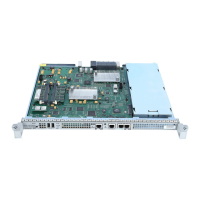
